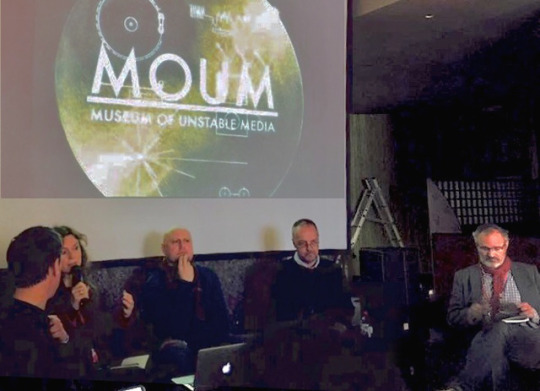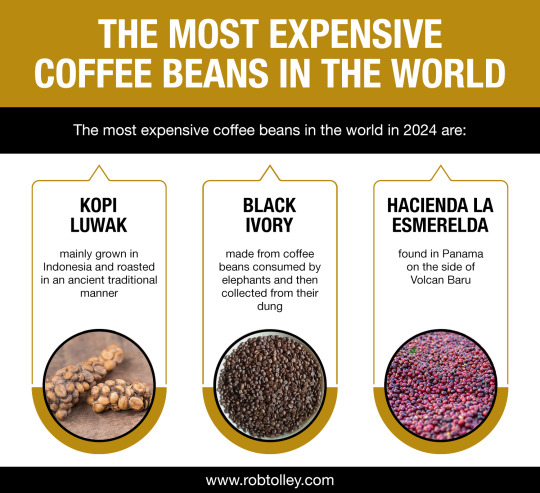#rob tolley
Explore tagged Tumblr posts
Text
Objection Handling 101

Objection handling refers to the techniques and processes deployed to address and overcome customer objections regarding a service or product. It’s a vital skill for those involved in customer service or sales.
Handling Objections
Successful CEOs – like Rob Tolley, former London broker – know that maintaining situational awareness is a key part of successful objection handling. In a nutshell, this means understanding the circumstances informing the customer or prospect’s objection in order to address them effectively. Keeping the focus on the customer’s needs and interests is one of the main factors in doing this.
Experienced managers such as Rob Tolley understand that empathy is also important, and those who are successful at handling objections are well aware that (in most cases) these objections reflect reasonable concerns. The objection handler should remain patient, even in the case of pushback, and always avoid becoming frustrated.
Asking the Right Questions
The ability to ask open-ended and thoughtful questions is the foundation of great objection handling skills. Relevant, tactful questions are often the best place to start, and the objection handler should be mindful to give the customer or prospect the time and space to answer them thoroughly. Those with objections should feel able to air their thoughts in order for the objection handler to best discover the underlying pain points.
Anticipating Objections
Effective objection handling relies on anticipating objections in the first place. This involves identifying and thinking about potential objections a customer or prospect could raise and preparing an appropriate response for each of these. A fundamental part of doing this is research; the customer or prospect’s goals, pain points and business (where relevant) should all be considered. This enables the creation of customer-specific responses to possible objections.
The Objection Breakthrough Formula
Some objection handling techniques involve using the objection breakthrough formula, which has three steps: break, disrupt and ask. The first step disrupts the emotional response through pre-prepared responses, while the second step aims to pique the customer or prospect’s interest and offer an alternative perspective. The final stage steers the discussion back to the original objective and is an opportunity to reiterate the value of the action first proposed in order to obtain agreement or compromise.
Navigating Towards a Mutual Goal
Ultimately, a customer or prospect objection can be regarded as an opportunity to work towards a mutual goal and a chance to transform an obstruction into a gateway. For best results, objection handling should be embraced, regularly practiced and incorporated into the overall customer success toolkit.
#rob tolley#rob tolley london#business#entrepreneur#objection handling#business advice#buisness tips#business growth
1 note
·
View note
Text
Preparing for Competitive Cycling

Competitive cycling is a rigorous sport that involves athletes pushing their physical limits while relying on their strength to propel their fast, lightweight bikes. Competitors may race individually or in groups, tackling various terrains, from short criteriums and hill climbs to multi-day stage races spread over road circuits and mountain tracks. Regardless of the level – local or international – thorough preparation and strategic confidence-building are paramount.
Meticulous preparation hinges on understanding the event's specific physical demands. Scouting the race route in advance and studying elements like climbs, descents, elevation profiles, and typical weather conditions enables you to tailor your training plan to simulate race-day challenges. In cases where physically scouting the route may be impossible due to its scale, online resources, maps, and videos can be a useful alternative.
Incorporating varied workouts into your structured training plan is essential. A good plan includes building endurance through consistent riding and boosting speed and power via interval training, hill repeats, and strength work. However, fitness experts stress flexibility within this framework to prioritize enjoyment and avoid overtraining injuries or burnout. Starting well in advance allows ample time to develop endurance and skills, preventing the unpleasantness of an overly compressed schedule.
During training, accustom yourself to peloton (large group or pack of cyclists) dynamics and positioning tactics. Riding alongside training partners allows you to simulate race situations through spontaneous challenges, such as speeding up on climbs or to specific landmarks, mimicking competitive maneuvers. Also, familiarize yourself with cycling terminology so you can converse fluently. Key terminologies include "penultimate lap" (critical final stages, i.e., the second-to-last lap), "breakaway" (separating from the peloton), and "chase group" (a collective effort to rejoin the breakaway).
Cross-training through complementary activities like running, swimming, or gym sessions bolsters overall fitness and prevents overuse injuries. These alternatives are vital for maintaining conditioning when weather or other situations prevent cycling. However, cycling remains the best choice for developing the leg muscles and aerobic capacity, so strike the right balance for continued improvement. Light strength work focusing on core and leg muscles for gym sessions can enhance cycling performance. Rest days should follow training to allow the body to recover and adapt to the workout sessions.
Eating right optimizes energy, endurance, and health for training and racing. In the days before big races, carbo-loading via high-carb meals can boost glycogen stores for sustained energy during competition. Protein from meat, eggs, and other foods helps repair muscles. Moreover, adequate hydration with water or sports drinks replaces electrolytes lost through sweat and prevents cramping and fatigue. Healthy fats from avocados, nuts, and fatty fish, among other sources, can also provide cyclists with long-lasting energy and aid in nutrient absorption.
The gear you choose can significantly enhance your performance in competitive cycling or hold you back, so selecting the proper equipment is crucial. Some cyclists invest in upgrades such as more aerodynamic accessories and continually refine their setup for peak performance. A bike with an ergonomic saddle and frame size lets you ride comfortably. Quality cycling clothes, helmets, and eyewear protect your body, while dependable cycling shoes enhance comfort and stability during intense efforts.
On race day, positioning yourself near the front of the pack is crucial to avoid crashes and stay in contention. Observe rivals during the race to gain valuable strategic insights and make tactical decisions. Additionally, stay aggressive for opportunities and safely seize them to gain a competitive edge. Coordinated teamwork and leveraging collective efforts help achieve shared goals when racing alongside teammates. Pacing yourself is also essential; expending much energy too early can leave you unable to make a decisive move later in the race.
0 notes
Text
An Overview of Commercial Litigation Law

When companies or individuals have conflicts in business transactions, contracts, or partnerships, they can turn to commercial litigation to resolve their issues. In commercial law, several key players and types of commercial litigation exist.
Plaintiffs are individuals or companies that bring a legal complaint against others. Defendants are those accused of wrongdoing by the plaintiffs. Lawyers represent plaintiffs and defendants in court, while judges carefully listen to both sides and make judgments according to the law.
Types of commercial litigation include breach of contract, which occurs when one party does not fulfill the terms of a business contract. Business torts involve wrongful actions in business, such as fraud or defamation. Intellectual property disputes involve trademarks, patents, copyrights, and trade secrets. In antitrust violations, companies engage in unfair competition. Other commercial litigation involves partnership and shareholder disputes.
In a commercial litigation case, the plaintiff files a formal complaint against the defendant. Both parties gather evidence, witness testimonies, and other information to build their cases. Pre-trial proceedings follow in which settlement negotiations may occur. If these are unsuccessful, the case goes to trial.
The trial includes presenting evidence and legal arguments before a judge or jury. The judge or jury delivers a verdict, determining the outcome of the case. Either party has a right to appeal the judgment.
0 notes
Photo




CONTENT: ‘Archive(s) of Unstable Media’ & ‘Still Moving’ events/teaser at this year’s Flatpack Film Festival. Much more to come in 2017 including100 + Media Art/Moving Image artists @StudioGeorgiou @georgioutolley @CoventryFAH @moumarchives
Images: ©GeorgiouTolley2017
1 note
·
View note
Link
It takes commitment to serve the community.
Fire and rescue personnel were recognized for their outstanding work at a Medal Day Ceremony on Saturday.
The Prince William County Fire and Rescue System held the third annual program at the Ferlazzo Building in Woodbridge, according to a release from the Prince William County Department of Fire and Rescue (PWCDFR).
Here are the awardees, who were honored Assistant Chief Matt Smolsky and Assistant Chief Lance McClintock:
Unit Citation
Technician II Christopher Clark
Technician I Kevin Ganssle
Technician II Daniel Jackson
Technician I Michael Baker
Lieutenant Todd Bell
Technician I Chadd Holmes
Technician I Kelly Hamner
Technician I Shaun Kent
Technician II Cager Mackaravitz
Technician II Greg Klatte
Technician II Anthony Aquinto
Captain Brian Ferguson
Technician II Victor Vega
Technician I Aldo Bonilla
Technician I Michael Chergosky
Captain Marcus Saager
Technician II Aaron Dillon
Technician I Neftali Mena
Lieutenant Tom Klimtzak
Technician II Adam Renner
Technician I Brandon Simon
Lieutenant William Sanderson
Technician II Victor Vega
Technician I Zack Markley
Lifesaving Award
Technician I Cody Durham
Lieutenant Beth Kenavan
Technician II Andrew Sanders
Lieutenant Bob Howard
Technician II James Helmick
Technician I Chet Prailey
Technician II Christopher Miller
Technician I William Carter
Technician I Kurt Hagen
Lieutenant Josh Dempsey
Technician II Josh Thomson
Technician II Nick Nurthen
Technician I Joel Bernardo
Technician I John Cramsey
Battalion Chief Tom Denner
Technician II Jeff Chapman
Lieutenant Matt Eckert
Technician II Leonel Teller
Lieutenant William Sanderson
Technician II Victor Vega
Technician I Nathaniel Deghand
Technician I Ian Sheedy
Lieutenant Brian Reader
Technician II Michael Mountain
Technician II Adam Renner
Technician I Zackery Markley
Lieutenant Justin Antes
Technician I Andrew Gorman
Captain Scott Arft
Technician II Neil Shoults
Technician I James Martin
Technician I Joseph Felsentreger
Technician II Kyle Straker
Technician I Ryan Turlik
Captain Brian Ferguson
Technician II Victor Vega
Technician I Aldo Bonilla
Technician I Michael Chergosky
Lieutenant Ryan Tolley
Technician II Jared Juliano
Captain Carl Ericson
Technician II Michael Favole
Technician I Emily Baden
Technician I Chris Drago
Technician I Bryan Smith
Lieutenant Jay Byler
Technician II Matthew Hall
Technician II Shaun Polite
Technician I Gabriel Lunders
Lieutenant Alex Stephenson
Technician II Stephanie Miller
Technician I Zach Burnette
Lieutenant Kevin Tobey
Technician II Andrew Hale
Technician II Christian Alloway
Technician I Asley Amezquita
Lieutenant Anthony Adamo
Technician II Ben Draxler
Technician II Rob Dimmel
Technician I Joseph O’Dell
Technician II Jemeel Brady
Technician I Rodney Woodward
Technician I Samuel Gorham
Technician II Joey Bloedel
Technician I Russell Lane
Technician I Brian Pelletier
Technician I John Payette
Technician II April Spicer
Technician II John Ransone
Technician I Samuel Field
Lieutenant Mike DeAtley
Technician II Peter Francisco
Technician I John Becker
Technician I Nicholas Gonnella
Technician II Alex Stephenson
Technician II Stephanie Butler
Technician I James Klenk
Technician II Keith Brock (Retired)
Dale City Volunteer Fire Department (DCVFD)
Lieutenant Thomas Mazzo
Firefighter Brandon Taylor
Technician Stacy Pyzowski
Recruit Maryan Ahmed
Meritorious Service Award
Technician I Asley Amezquita
Lieutenant Ken Zack
Lieutenant Nick Feliciano
Technician II Chris Gott
Officer of the Year
Lieutenant Ryan Kirk
Chief’s Commendation Award
Captain Jonathan Newell
Farrah Large
The post Awards ceremony honors fire and rescue personnel appeared first on What's Up Prince William.
via What's Up Prince William
0 notes
Text
OMG! They look EXACTLY like WOMEN! They Could have fooled Me!
RushLimbaugh.Com
Rob Reiner as “The Distraction,” – Upload.wikimedia.org – Variety – JAF IMAGES
___________________<>_________________
UN Fingerprints + Soros Funded NGO’s BEHIND The Illegal Invasion Into America: The Whistleblower. The Proofs – Commentary By Adina Kutnicki
Posted on April 9, 2019
BY now, only the comatose and the willfully blind – coupled with those who have malignant intent – can’t/won’t admit that designs are afoot to destroy America as a sovereign nation state. That ship has sailed.
youtube
IN fact, one needn’t be particularly astute to recognize that the country is being invaded in a highly orchestrated manner – despite the appearance of chaos, as an endless (emphasis placed) stream of flesh pushes across the southern border and into America’s interior!
NOW, as per those of us whose eyes have been peeled towards the endless undermining, well, none of this is “news.” In reality, alternative media, that is, the non-PC captured megaphones, have led the way in sounding the alarms. As such, consider the following as proof of the same:
PROOF(S) OF THE SAME:
Back in 2013, a mega spotlight was glared on the red-green alliance – that which is underpinned by anti-American actors within the belly of the nation; aided and abetted by foreign alliances. Be they operating from political, media, academic, legal/judicial, cultural, or self-appointed elite perches, they have one common goal: the destruction of America! Resultant, it became mandatory due diligence to sound the alarm at American Thinker via “Bringing Down America: A Review.”
And with the blaring of additional bells in ensuing years, it was in Oct. 2016 that the dangers from assorted force multipliers were treated (at this site) as a “High Threat” level of alert. The fact that back-up was provided through a MEGA warning from a premiere counter-terrorism and counterintelligence operative, well….”Dave Gaubatz Issues Multiple Alarm Bell Warnings: Heed Them, America’s Survival On The Precipice.” Bulls-Eye!
OF course, throughout it all, these pages exposed the UN’s fingerprints and its machinations through a massive array of NGO’s – underpinned by the most dangerous man in the west: George – the devil incarnate – Soros!
JUST consider…..
youtube
Along this same trajectory, who recalls Jeh Johnson, Obama’s parasitic DHS Director, yes, in lockstep with an anti-American administration and Soros’s Agenda 2030, UN Agenda 21? If not, take a peek back to 2016: “DHS, Jeh Johnson, Proclaimed: Gun Control On Tap. DHS Will Assist To Pass Laws! “
Excerpted within the aforementioned link from 2016, pay heed to the following bullet points, after all, there is no sense in reworking the wheel.
In Sept. 2013, it was reported: the UN Arms Trade Treaty was written in secret by the Obama/Hillary Clinton State Department, along with Russia, China, France and Britain.Article 2 defines the conventional arms covered, which include battle tanks,
artillery systems, combat aircraft,
attack helicopters, warships, missiles — and “small arms and light weapons.”Article 3 of the treaty places UN prohibitions on “ammunition/munitions fired, launched or delivered by the conventional arms (including small arms) covered under Article 2.”Article 4 puts all “parts and components” of weapons (including small arms) within the scheme.Several places in the treaty text, including Article 5, require all countries to “establish and maintain a national control system, including a national control list.” Moreover, it declares, “Each State Party is encouraged to apply the provisions of this Treaty to the broadest range of conventional arms.”Article 5, Section 4 says each State Party “shall provide its national control list to the Secretariat, which shall make it available to other States Parties.”
Fast forward to Oct. 2015, and who recalls L O R E T T A ‘s speech at the UN, you know, the one which included the Orwellian initiative to combat “violent extremism” – whatever the hell that means. Part and parcel thereof, another gobbleygook invention – the “Strong Cities Network”– is unveiled. Hmm. WTF are they hiding?? Well, said doublespeak is the backdrop for the Marxist/Islamist bent AG’s pronouncement: the US formed a “Global Police Force Partnership with the UN”! Yes, the UN is the defacto controller of America. Full stop.
IN this regard, let’s calculate all the ways in which the onslaught at the southern border has gone from bad to worse to the current CRISIS point. In so doing, there is NO other conclusion to be drawn: it was pre-designed!
ALAS, as always, even evidentiary trails are not enough for certain folks, most especially, when the PC thought police hurl insults that are perceived worse than the “kiss of death” to the weak-minded and weak-willed. Yes, by framing the narrative in terms of racism and all applicable “isms”, a veil of silence descends. And when they add in “conspiracy theorist”, well…..
BUT never mind. At these pages such tarring is like water off a duck’s back – and then some.
ONCE again, let’s wend back in time, albeit a mere two years. In 2017, the following whistleblower more than backed up the evidentiary trails within this site. So, listen up.
youtube
Radio show host Josh Tolley interviewed an unidentified American woman from Missouri who learned about her state’s refugee immigration program by attending UN-sponsored meetings and participating in the programs. She said that refugees are brought into the US in alliance with the UN Refugee Resettlement Organization Offices of Refugee Monitoring out of Washington, DC. In her state, Missouri Social Services administers the refugee programs that provide welfare for housing, food stamps, and medicare, in addition to cash and jobs.
The refugees receive US passports and Social Security numbers so they can receive Social Security benefits. They are screened and, where possible, encouraged to apply for lifetime disability benefits under Social Security.
Many refugees are allowed into the US who have communicable diseases such as tuberculosis, leprosy, and smallpox.
The woman reported that there is ZERO vetting of refugees and that most are “FUNUs” which is an acronym for ‘full name unknown’. Most of them are males aged 15 to 45 instead of women and children.
She said that Trump reduced the number of refugees from Obama’s proposed 110,000 down to 50,000. From October 2016 through February 2017, the US had taken in 34,000. Democrats are not the only supporters of increased refugee immigration. Paul Ryan advocated bringing in 300,000 refugees.
The refugees usually are transported for settlement in the dead of night, not because of the lower air fares, but because that avoids being seen by large crowds at airports.
The federal government is secretive about how many refugees are being resettled in the US, and many governors are totally unaware of how many are in their states. The governors of Texas and Tennessee have refused to accept any more refugees and now are being sued by the US government.
The Wilson-Fish program allows the US government to circumvent state sovereignty in refugee resettlement by funding third-party organizations. She mentioned several third-party organizations that benefit from taxpayer money in this way. They include the Jewish Vocational Services (which also uses the name Jewish Technical Services), Catholic Charities, and Lutheran organizations. They receive $2500 to process each refugee plus block grants to staff offices. She said she believed they are making huge amounts of money above their costs..
Her closing comment was that she believes the refugees are a tool of invasion used by the United Nations under Agenda 2030 to remove national borders. If the UN officially recognizes a group of refugees, then UN ‘Peacekeeper’ soldiers may be placed wherever the refugees are located. She said that there have been sightings of UN trucks in her state. She also said that there is a scheme to remove county sheriffs in order to implement total UN authority in local areas.
She ended the interview by exhorting people to get involved locally to learn what is going on in their communities, to read about their states’ refugee programs on their Social Services websites, and then to meet with local and state lawmakers to stop this covert UN scheme for destruction.
PATRIOTS, it should be obvious by now that time is of the essence, relative to mitigating the grave damage(s) caused by various anti-American forces from within and without. Effectively, they sold out the national interest to the UN kleptocracy and its assorted, tentacled NGO’s – aiding and abetting a continuous stream of attacks on the southern border, at the same time that they fuel and fund the so-called refugees. A double-pronged destructive surge.
RESULTANT, the following was messaged to readers in January 2019, and it was not for nothing: “Real-Time Jihadi Threats To The American Homeland: What Will It Take To Drag Socialist-Driven (Paid Off) Dems To Seal The Entry Points?” Incontestably.
BACK to the ever-lurking red-green alliance….
PIGGYBACKING with real-time threats from the green/Islamic side of the alliance, similarly, the red/socialist/Marxist/communist side is poising to strike. Through the massive flow of illegals via narco-terror and human traffickers, in tandem with tipping the voter rolls in the Demster column for decades to come, isn’t the outcome a foregone conclusion? Rhetorical.
SANS a scintilla of a doubt, if millions of patriots don’t “tip the scales” (whatever it takes) back towards the nation’s roots, well, America will no longer exist – other than as a dead carcass, barely resembling the once great nation that it was!
A CLEAR & PRESENT DANGER…..PATRIOTS, IT’S YOUR CALL!!
UN Fingerprints—And Soros Funded Non Government Organizations’s BEHIND The Illegal Invasion Into America: The Whistleblower. The Proofs – Commentary By Adina Kutnicki ___________________<>_________________ UN Fingerprints + Soros Funded NGO’s BEHIND The Illegal Invasion Into America: The Whistleblower. The Proofs – Commentary By Adina Kutnicki…
0 notes
Text
23 Creative Design Ideas from the Education Industry
Those of us at HOW will always raise our glasses to the educators of the world—those courageous individuals bringing passion to the classroom and changing lives in the process. But today, we want to recognize some other underappreciated superheroes in the education sector: the in-house designers. The creatives behind the materials that help ensure there are places in which knowledge can be shared, educators to share it and students ready to learn.
As we near the final deadline for the HOW In-House Design Awards (July 5, 2017!), we feature 23 projects that have been recognized in the Awards over the past few years. Those of you leading or working on in-house design teams in the education industry—we hope you’ll soak up some inspiration from these award-winning projects and consider entering your own team’s best work.
As for those of you in-housers in other industries—be sure to check out the full list of categories for the HOW In-House Design Awards. There’s a category for B2B, consumer, education, nonprofit and several more industries. And there’s always a a place for your best work.
23 Creative Design Ideas in the Education Sector
1. Kutztown University Senior Portfolio Review
COMPANY/ORGANIZATION Kutztown University CREATIVE TEAM Jamie Basile and Denise Bosler LOCATION Branchburg, New Jersey
2. Be Creative Campaign
COMPANY/ORGANIZATION Full Sail University, Platinum Creative, Winter Park, FL; www.fullsail.edu DETAILS The “Be Creative” campaign tells the stories of how people express their creativity and reveals how Full Sail University is a community that empowers originality and innovation.
3. Boston University Annual Report (2015)
COMPANY/ORGANIZATION Boston University, www.bu.edu/marcom CREATIVE TEAM Doug Gould, Lee Caulfield, Caleb Daniloff, Ken Lewis, Janice Checchio, Chalres Alfier, Maureen Moran, the interactive team, Bruce Peterson, Mark Fleming, Scott Nobles DETAILS The goal of the annual report was to demonstrate the tenacity of Boston University’s researchers despite less research dollars being available to all universities, including BU.
4. Capital Campaign Brochure
COMPANY/ORGANIZATION School of the Art Institute of Chicago, www.saic.edu CREATIVE TEAM David Collins, Travis Saunders, Sophia Brown DETAILS This visually and tactilely engaging brochure includes a semi-transparent front pocket for story cards featuring the work of alumni, students and faculty members who benefit from donations.
5. Evening of Exploration
COMPANY/ORGANIZATION Wheaton Academy, Chicago; www.wheatonacademy.org CREATIVE TEAM Nikki Daniels, Megan Cochrum, Jim Holtrop, Catherine Tilly, Deb Anderson, Joey McKenna, Matt Hockett, Dan Nicholas DETAILS The objective was to create a unique event that casts vision for equipping students to be active participants in the broader narrative of scientific exploration and discovery, and raise funds for Wheaton Academy’s new science facility.
6. Graphic Design and Designing Green Poster (2015)
COMPANY/ORGANIZATION Auburn University School of Industrial + Graphic Design CREATIVE TEAM Courtney Windham LOCATION Auburn, Alabama
7. League of the Constant & True
COMPANY/ORGANIZATION Wake Forest University, Winston Salem, NC; www.wfu.edu CREATIVE TEAM Hayes Henderson, Kris Hendershott, Emily Bratton, Lisa Perriello, Joel Bowers, Gretta Kohler, Bart Rippin DETAILS The League of the Constant & True targets young alumni and those who haven’t given in the past, encouraging them to start an annual streak of philanthropic support to Wake Forest.
8. Full Sail University’s Hall of Fame Exhibit
COMPANY/ORGANIZATION Full Sail University CREATIVE TEAM Platinum Creative Image & Design LOCATION Winter Park, Florida
9. ARTSpeak (2014–2015)
COMPANY/ORGANIZATION Fashion Institute of Technology CREATIVE TEAM Christie Shin, C.J. Yeh, Patrick Obando Polio, Bea Saludo, and Angel Choong LOCATION Englewood Cliffs, New Jersey
10. Admissions Viewbook
COMPANY/ORGANIZATION Wake Forest University, Winston Salem, NC; www.wfu.edu CREATIVE TEAM Hayes Henderson, Brent Piper, Bart Rippin, Rob Daniels, Ken Bennett, Gretta Kohler DETAILS The main objective was to create a tone and visual energy that would provide answers to prospective students in ways that conjure the student experience.
11. Music Department Brochure
COMPANY/ORGANIZATION Kutztown University, Kutztown, PA; www.kutztown.edu CREATIVE TEAM Karen Kresge, Michael O’Donohue, Soo Goh, Jeremy Justeson DETAILS The objective was to attract high school students to Kutztown University to study music, while representing the dynamic music department and the many opportunities that the program offers.
12. Social Paper Catalog
COMPANY/ORGANIZATION Columbia College Chicago CREATIVE TEAM Mary Forde and Stefan Coisson LOCATION Chicago, Illinois
13. Studio Twelve01 Art Walls
COMPANY/ORGANIZATION The University of Texas-Pan American CREATIVE TEAM Kimberly Selber and Santa Hernandez LOCATION Edinburg, Texas
14. DxD: Differentiate by Design No. 2
COMPANY/ORGANIZATION Pratt Institute, New York City; www.pratt.edu CREATIVE TEAM Joshua Graver, Peter Tannenbaum, David Dupont DETAILS The objective was to highlight the results of Pratt’s corporate partnerships and sponsored studios that allow the institute’s students to work on real-world projects that offer innovative design solutions.
15. Theatre Center Season Brochure (2013–2014)
COMPANY/ORGANIZATION Columbia College Chicago; www.colum.edu CREATIVE TEAM Ben Bilow, Jacob Boll, Mary Forde DETAILS The objective was to feature photography that evokes the paintings of “old masters” while also conveying the department’s signature contemporary portrayals of classical dramas through dramatic depictions.
16. Full Sail University’s Welcome Center
COMPANY/ORGANIZATION Full Sail University CREATIVE TEAM Platinum Creative Image & Design LOCATION Winter Park, Florida
17. Prattshows
COMPANY/ORGANIZATION Pratt Institute, New York City; www.pratt.edu CREATIVE TEAM Joshua Graver, Peter Tannenbaum, David Dupont, Kara Schlindwein DETAILS The objective was to promote Pratt’s end-of-year event and exhibitions as well as its original public programming, all in a single piece.
18. Hall of Fame 7 Branding
COMPANY/ORGANIZATION Full Sail University, Platinum Creative, Winter Park, FL; www.fullsail.edu DETAILS To mark Hall of Fame 7’s seventh year (and to honor the decade the school was founded), the team drew inspiration from the 1970s.
19. SVA Graduate Catalog (2014–2015)
COMPANY/ORGANIZATION School of Visual Arts, Visual Arts Press Ltd., New York City; www.sva.edu CREATIVE TEAM Anthony P. Rhodes, Michael J. Walsh, Brian E. Smith, Sheilah Ledwidge, Collier Schorr, Abby Kreh DETAILS The objective was to provide potential students with the information they need, such as program overviews, course descriptions, faculty bios, sample programs, etc.
20. Youth Program Brochure
COMPANY/ORGANIZATION Pratt Institute, New York City; www.pratt.edu CREATIVE TEAM Joshua Graver, Kara Schlindwein, Peter Tannenbaum, David Dupont DETAILS The objective was to promote Pratt’s K–12 art programs and to raise money to support it.
21. Bridging Business, Culture, Politics
COMPANY/ORGANIZATION Zeppelin Universität, Friedrichshafen, Germany; www.zu.de CREATIVE TEAM Philipp N. Hertel, Ulrike von Dewitz, Tim Göbel DETAILS The objective was to develop a unique design language for the attitude of “bridging” business, culture and politics.
22. BU Momentum Event in Beijing, China
COMPANY/ORGANIZATION Boston University; www.bu.edu CREATIVE TEAM Suzan Glaum, Andrea Kennedy, Alyce Nicolo DETAILS The objective was to represent both BU and Beijing, while being relevant to all other countries in the Asian Alumni Association. Elements had to be scaled to a website and invitation, as well as signage.
23. STCL Annual Report to Donors (2013–2014)
COMPANY/ORGANIZATION South Texas College of Law, Houston; www.stcl.edu CREATIVE TEAM David Powell, Terry Vine, Laura Tolley DETAILS The objective was to thank the alumni for their ongoing support while encouraging them to continue to give back to the college.
Show your in-house clients that you’re an industry leader. Enter to win the HOW In-House Design Awards by 7/5!
The post 23 Creative Design Ideas from the Education Industry appeared first on HOW Design.
23 Creative Design Ideas from the Education Industry syndicated post
0 notes
Text
The Best Off-the-Beaten-Track Destinations in Europe

Europe is full of hidden gems, with plenty of places to visit that are far from the tourist throng, from ancient cities to remote island chains.
The Ancient City of Matera, Italy
Nestled in the south of Italy, the ancient city of Matera, perched atop its rocky hill, remains one of the country’s best-kept secrets. Matera languished abandoned for some years but has now come alive once more, and it is bustling with restaurants, galleries and boutique hotels. The cave dwellings of Matera are well worth checking out, such as the rocky church of St Lucia alle Malve, with its 13th century frescoes, and Casa Grotta di Vico Solitario, a museum housing artisan tools and furniture.
The Tiny Town of Aveiro, Portugal
Portugal may be a popular tourist destination, but relatively few visitors find their way to the little town of Aveiro, in the north of the country. Keen travellers like Rob Tolley know that it really is a hidden gem, with canals winding through the town, brightly coloured buildings and intricately decorated Moliceiro boats. Aveiro sits on the edge of a saltwater lagoon, the Ria de Aveiro, that was historically farmed for its salt, seaweed and fish.
The Green Appeal: Graz, Austria
Graz may be Austria’s second-largest city, but it’s still relatively unknown when it comes to city breaks. Surrounded by swathes of Styrian countryside, visitors can enjoy plenty of farm-to-fork cuisine here; Graz is particularly celebrated for its fresh produce and vegetarian dishes. However, fine food isn’t all the city has to offer; Graz has earned two UNESCO designations and boasts gorgeous frescoed facades, medieval cobbled streets, the ruins of a hilltop fortress and ancient churches to explore.
The Wild Outer Hebrides, Scotland
The Outer Hebrides islands, off the coast of Scotland, are among the most remote destinations in Europe and are home to awe-inspiring ancient sites, pristine sandy beaches and quaint seaside villages. The Isle of Harris and the Isle of Lewis are known for their delicious fresh seafood, hiking opportunities and the chance to spot whales.
The Rich Culture of Zagreb, Croatia
Those passionate about travel, such as Rob Tolley, former London broker, are aware that while most visitors to Croatia head to the coast, the country’s capital of Zagreb makes for a beautiful destination. Here tourists can discover fascinating architecture and pay a visit to the early morning Dolac Market to sample a selection of local fare. The Museum of Broken Relationships is also a must-visit for those coming to Zagreb!
1 note
·
View note
Text
Making Business Travel Easy

Traveling for business can be stressful and sometimes even uncomfortable, but taking a few simple steps can make the whole experience much easier and more pleasant for frequent business travellers.
Be Clear on the Company’s Travel Policy
Before doing anything else, it’s important for the business traveller to be familiar with their company’s procedures and rules relating to corporate travel. This includes things like who needs to approve the trip, expenses that can be claimed and how the refund process works.
Packing for Business Travel
It’s a good idea to only use carry-on bags and to pack light. Packing dress shirts in plastic garment bags will help keep them wrinkle-free in the suitcase, and taking along some casual clothing is advisable to make the most of any opportunities to explore the destination. Add some items to help with sleep too, such as an eye mask, pillow or headphones.
When packing, keep security checkpoints in mind; for example, electronics and liquids should be easily accessible. Make the most of packing cubes to get everything organised; each could hold a different day’s outfit or certain type of garments, like casual or gym wear.
Opt for Non-Stop Flights
While it may be tempting to break up a long flight with a layover, it’s usually best to book a non-stop flight to avoid lengthening a trip more than necessary. Exercise may help to counter the effects of jet lag. Exercising in the early morning or late afternoon can push your circadian rhythm back to an earlier time, while exercising in the evening can bring it forward.
Be Aware of Etiquette
Regular business travellers like entrepreneur Rob Tolley, former London broker, know that researching the country being travelled to allows you to find out about local etiquette, including etiquette relating to business. For example, while eye contact and handshakes are normal in the West, greetings in Asian countries often prioritise hierarchy and age. Similarly, business meetings in Mexico tend to be conducted over lunch, while Finnish business people regularly gather in a sauna to promote creativity and an open approach.
Make the Most of Airport Lounges
Frequent travellers such as Rob Tolley realise that airport lounges often offer a comfortable space in which to either relax or work. Wi-Fi connections, electrical outlets, food, drink, showers and even spa facilities can usually be found, presenting the opportunity to catch up on last-minute work tasks or take a break.
Store Receipts Properly
In order to be able to claim refunds for business expenses, receipts need to be kept and stored. Bring along an envelope or folder specifically to keep them in. It’s also a good idea to take a photo of every receipt, just in case any go missing.
0 notes
Text
How to Make Great Coffee at Home

Those who would love to enjoy barista-style coffee at home will be pleased to know that doing so is possible. By simply following the coffee expert-endorsed tips below, anyone can create an amazing cup of coffee to savour without needing any expensive equipment.
Opt for Coffee Beans
Choosing coffee beans over ground coffee is the start of making great coffee at home. Beans retain their inherent aromatic oils better than ground, so they stay fresher for longer. This is because grinding the beans allows the coffee’s surface area to come into contact with oxygen, and it is this oxygenation that causes grounds to become flavourless and stale. For information on how to properly store coffee beans, take a look at the embedded PDF.

Freshness is Key
Coffee aficionados like Rob Tolley, former London broker, know that the freshness of the ground coffee beans is essential to make barista-worthy coffee at home. Ideally, coffee beans should be used within a month of their roasting date, and it’s best to purchase just the amount of coffee that one will use in a fortnight, rather than stockpiling it.
Grinding Coffee Beans
Rob Tolley understands that when it comes to coffee grinders, not all are made equal. Experts often recommend using a burr rather than a blade grinder as users can easily adjust the former to achieve the desired consistency. The brewing method should determine the size beans are ground to. For example, coarse is best for use in a cafetière, medium works best for filter coffee, and a fine grind is perfect to brew an espresso-style strong coffee.

Pay Attention to the Water
When making barista-style coffee at home, it can be easy to forget that the majority of the beverage is made up of water; to this end it’s important to use boiled, filtered water, and pausing once the kettle has boiled is also key. Experts point out that coffee can be burnt by just-boiled water, so it’s a good idea to leave the kettle to stand for a minute or two before pouring.
Get Pre-Warming
While waiting for the kettle to cool a little, it’s the perfect time to pre-warm your coffee mug. To do this, simply pour a little of the hot water into the mug to warm its walls, ready to receive the beverage.
Perfecting the Frothy Cappuccino Milk Technique
Trial and error – and plenty of practice – is the best way to achieve the perfect frothy milk for a barista-style cappuccino. Listen for a tearing noise when steaming the milk: this noise should be present for half the time the milk is being steamed to ensure it’s sufficiently foamy.
youtube
0 notes
Text
Which Is Better: Indoor or Outdoor Cycling?

For cyclists, there are more opportunities to enjoy the sport than ever before, from riding in the great outdoors to using an indoor bike or a spin bike in a gym. This article will consider which is the best form of the sport.
Convenience
When it comes to convenience, it’s hard to beat indoor cycling; there’s no need to worry about the weather, donning layers of clothing or having to carry out a tricky repair on the side of a road. At home, cyclists can ride whenever they want, with minimal hassle, whether this is first thing in the morning, during a lunchbreak or late in the evening.
youtube
Boost to Mental Health
While indoor and outdoor cycling (as with all forms of exercise) are both great for physical and mental health, outdoor cycling may have the slight edge in terms of the latter. Cycling outdoors allows you to enjoy fresh air, sunshine and chatting with friends during the ride. However, internet connectivity and training apps now offer cyclists the ability to socialise even when exercising indoors.

The Cost Factor
Keen cyclists such as Rob Tolley know that whether cycling indoors or outdoors, there is likely to be a significant cost involved – although there are ways to mitigate this. For example, while a contemporary, high-end road bike can cost £10,000 or more, used models can be found for a fraction of this price. Similarly with indoor bikes, the cyclist could choose to purchase a pricey direct drive bike or a budget-friendly magnetic model.
Which Form of Cycling is More Challenging?
Generally speaking, outdoor cycling is the most physically challenging. Rob Tolley, former London broker, recognises that unlike riding indoors, cycling outdoors involves maintaining balance on often difficult terrain. This can help to develop better reaction times and the ability to shift weight, as well as build confidence. Of course, it’s worth noting that cyclists can make their workouts as easy or intense as they wish, whether they are riding at home or outdoors; in terms of the latter, this can be done by increasing the indoor bike’s resistance or cadence level.
Transitioning from Outdoor to Indoor Cycling
For those who want to transition from cycling outdoors to indoors, it’s important to ensure that the fit on their static bike is as close as possible to that of their outdoor bike. This means, where possible, adjusting the seat height, the distance between the saddle and handlebars, and the height of the handlebars as necessary.
Take a look at the embedded PDF to learn about the differences between spin bikes and indoor stationary bikes.

#rob tolley#rob tolley london#cycling#spin bike#outdoor cycling#exercise#spin class#indoor vs outdoor cycling#Youtube
0 notes
Text
The Process of Producing Coffee

Coffee is one of the world’s most famous beverages, as it is consumed around the globe. The process of coffee production, from seed to consumer, entails several steps. Coffee beans, essentially seeds, must undergo drying, roasting, and grinding before brewing into the beloved beverage.
Coffee seeds, known as unroasted coffee beans, are grown in rows shaded by excessive sunlight. Fresh seeds typically germinate within approximately two and a half months after planting, although older seeds may take up to six months to sprout. Coffee plants should ideally be cultivated in hilly regions with nitrogen-rich volcanic soil for optimal growth.
Elevation plays a crucial role in coffee cultivation. The arabica species thrives at higher altitudes, whereas the robusta species is typically grown at lower elevations or sea level. Additionally, coffee plants have specific rainfall requirements. A distinct wet season for cultivation and a dry season for harvesting is crucial.
Whether by machine or human hands, coffee is harvested through one of two methods: strip picking or selective picking. The strip-picking method involves removing cherries from the branch, which can be done manually or with a machine. When employing selective picking, only the red cherries are harvested, leaving the green ones to mature further.
After the harvest, coffee cherries undergo immediate processing to prevent spoilage. Two primary methods are employed based on resources and location: the dry and wet methods. The dry method, known as unwashed or natural processing, is commonly used in areas with limited water access and by small-scale farms. Cherries are spread on drying beds, exposed to the sun for 15 to 20 days, regularly turned, and covered at night to prevent moisture absorption. The wet method involves washing and sorting cherries before pulping them to remove the skin.
Next, the mucilage-coated beans ferment in large tanks with added enzymes to dissolve the sticky substance. After approximately 24 hours, beans are repeatedly washed to eliminate residue. These beans are sun-dried for a day or two before being sorted into different grades.
The coffee milling process involves several steps, including preparing dried beans for market. Hulling removes the dried husk layers (exocarp, mesocarp, and endocarp) from parchment coffee beans. Polishing eliminates sliver skin that may remain after hulling. Polished beans are considered higher quality but show little difference in content compared to unpolished beans.
Grading involves sorting beans based on size, weight, color consistency, and flaws. Initially done by hand, the process can take hours. A more efficient method uses pneumatic sorting by air jet to separate light and heavy beans. Beans are also sized through screens on a scale of one to ten. Only the finest beans are graded as high quality.
Coffee roasting is the pivotal process that transforms green coffee beans into the aromatic brown beans we love. Whenever feasible, the roasting process occurs near the consumer to maintain freshness. Beans begin to deteriorate in quality as soon as they are roasted. It’s conducted at about 550 degrees Fahrenheit, with the beans continuously turned to prevent burning. Initially, the beans dry and turn yellow, emitting a roasting aroma. When the beans reach about 400 degrees Fahrenheit, a first crack occurs, causing the beans to double in size and become light brown.
The beans turn medium brown as the temperature rises, releasing a fragrant oil called caffeol. This pyrolysis stage is crucial, imparting the aroma and flavor to coffee. Beans can be stopped at this stage for a light or medium roast or continue for a darker roast. Around 440 degrees Fahrenheit, a second crack signals the start of the second pyrolysis, resulting in dark brown, oily beans. After roasting, the beans are rapidly cooled with water.
After roasting, coffee beans are carefully packaged to retain freshness and flavor. This packaging comes in different types, such as whole bean, ground, or single-serve pods, often sealed in vacuum bags to shield the beans from air and light. Subsequently, the distributed coffee reaches local cafes, retail stores, and consumers. It can journey far from coffee-producing nations to reach regions known for their love of coffee.
0 notes
Text
Surety Bond Underwriting: An Overview

Surety bond underwriting is a pre-approval evaluation – performed by the surety – of the bond performance requirements as determined by the obligee. This evaluation also assesses the current financial situation of the principal in order to weigh up the risk related to the performance criteria and the principal's ability to reimburse the surety in the event of a claim occurring.
What Are the Stages of the Surety Underwriting Process?
The process starts with the principal applying for a surety bond through a surety bond broker or surety company. Upon application, the principal provides information to the surety regarding their business and financial history. Once this is received the surety performs a more detailed evaluation of the information provided. The surety then provides the principal with a quote for a surety bond premium, based on the risk level determined by the underwriters.
The principal has three options at this point. They can accept the quote and buy the surety bond, shop around for another quote or work with the surety to find ways of making their premium more affordable
What Are the Three Cs of the Surety Underwriting Process?
The three Cs of surety underwriting are capital, capacity and character. Capital relates to the applicant’s capital position and the assessment of the financial health of the company or individual applying for surety credit. Many bonds require an underwriter to perform a financial analysis to assess net worth, capital and the company’s trajectory. The applicant’s capacity to undertake and perform the contract is a vital part of the underwriting process, too. To this end, underwriters collect questionnaires, check previous work references, review the applicant’s business operations, get to know their processes and meet with the applicant themselves.
Finally, character. While this element can be very difficult to underwrite, there are tools that can be deployed, such as credit checks, to get a better idea of whether the potential principal is likely – or otherwise - to honour the obligations set out in a bonded contract.
Underwriting a Riskier Surety Bond
Experts in the fields of surety, such as Rob Tolley, former London broker, know that there are various ways an underwriter can approve even a riskier bond by minimising the risk to the surety. For example, additional capital may be required to approve it; this could range from a small percentage of the bond amount up to 100%. This collateral minimises the surety’s risk, as if a bond claim occurs that cannot be indemnified the surety has something to cover – or at least reduce – their loss.
#rob tolley#rob tolley london#insurance#surety#surety bonds#insurance broker#underwriting#surety underwriting#risk level
0 notes
Text
The Importance of Reinsurance

In the insurance industry, one essential but often overlooked aspect is reinsurance. This financial strategy plays a critical role in fostering the resilience and longevity of insurance companies.
Reinsurance is a risk management strategy where insurance companies transfer a portion of their risk to other insurance entities, known as reinsurers. In this arrangement, the primary insurer (the ceding company, or cedent) pays a premium to the reinsurer to cover a share of its policies. In return, the reinsurer agrees to indemnify the primary insurer for losses incurred beyond a specified threshold.
This concept serves as a robust mechanism for spreading and diversifying risk. By transferring a portion of the risk to reinsurers, primary insurance companies can protect their capital from catastrophic losses. This enables insurers to underwrite larger policies and take on greater risk, contributing to a healthier and more sustainable insurance market.
In the face of unprecedented events, such as natural disasters or global economic downturns, reinsurance acts as a financial safety net for insurance companies. The ability to recover from substantial losses through reinsurance payouts ensures the solvency of insurers, maintaining the stability of the entire insurance system.
Reinsurance also facilitates the expansion of insurance capacity. By sharing risk with reinsurers, primary insurers can take on more or larger policies without compromising their financial health. This capacity expansion not only benefits the insurance companies, but also enhances the availability of insurance products in the market, fostering economic growth and resilience.
Furthermore, reinsurers often specialize in certain types of risks or regions. By partnering with reinsurers possessing expertise in specific domains, primary insurers gain access to valuable insights and risk assessment capabilities. This collaboration enhances the overall underwriting process, leading to more informed decisions and improved risk management strategies.
Regulatory authorities often mandate certain levels of solvency and capital adequacy for insurance companies. Therefore, reinsurance allows insurers to meet these regulatory requirements, ensuring compliance with regulatory bodies and industry standards and maintaining the trust of policyholders and investors.
The presence of a robust reinsurance market encourages innovation within the insurance sector. Insurers are more likely to experiment with new products and coverage offerings when they have reinsurance support to manage the associated risk. This innovation not only benefits the industry, but also meets the evolving needs of businesses and consumers.
In this highly interconnected world, where risk transcends geographical boundaries, reinsurance plays a vital role in global risk management. Natural disasters, pandemics, and other catastrophic events can impact insurers worldwide. Reinsurance provides a mechanism for spreading these global risks, ensuring that the consequences are shared across multinational corporations.
While reinsurance does come with certain challenges, it's important to highlight that these concerns are relatively minor compared to the substantial benefits it provides to the insurance industry. The occasional complexity in agreement interpretation is a navigable aspect, often mitigated through thorough contract design and communication. Counterparty risk, though present, is typically managed by careful selection of reputable reinsurers.
In essence, these challenges, though they do exist, are manageable within the broader context of the valuable role reinsurance plays in enhancing financial stability, enabling capacity expansion, and ensuring global risk management. The strategic importance of reinsurance in navigating uncertainty and fostering resilience far outweighs these relatively minor concerns. Ultimately, reinsurance is not just a financial tool, it is the backbone of a resilient and sustainable global insurance industry.
0 notes
Text
An Overview of the Global Reinsurance Industry

Reinsurance refers to an insurance contract between two insurance companies. In this arrangement, the cedent or insurance company moves the risk of policies written to the reinsurance company, transferring all or some of its current policies to the reinsurer.
The reinsurance industry is categorized and segmented using different criteria, including type and application. The application category is further divided into direct writing and broker segments. Direct writing is where the cedent or insurance company deals directly with the reinsurance provider. This approach works best for insurance companies seeking to establish a unique relationship with the reinsurer or those who have specific reinsurance needs.
The broker segment of reinsurance features intermediaries who facilitate the relationship between the insurer and reinsurer. Brokers provide expertise in deal negotiation, risk assessment, and the structure of relevant agreements.
The type category features segments such as property and casualty reinsurance and life reinsurance. The former manages the property and casualty insurance transfer risks. Reinsurers under this segment manage large and sudden claims for occurrences like accidents and natural disasters. Property and casualty reinsurance helps to stabilize primary insurers’ financial positions following disastrous events that could plunge the organization into serious financial loss.
On the other hand, life reinsurance entails the reinsurer assuming the risk underlying life insurance products. Longevity, mortality, and other types of risk within the life insurance policy fall under this segment. Life reinsurance helps life insurance companies hedge their financial risk in the unlikely death of an unusually high number of policyholders.
It is impossible to overlook or underrate the global reinsurance industry - as of 2022, its market was valued at $292 billion. It is forecast to expand at a compound annual growth rate of about 3 percent, reaching $350 billion by 2028.
Outstanding reinsurance market division by regions encompasses North America, Europe, Asia Pacific, the Middle East, South and Central America, and Africa. North America is the industry leader, covering over a third of the global net reinsurance premiums. The US industry comprises both multinational and domestic reinsurers and brokers.
An article in GlobalData reported that the European region dominated the market in 2021 in terms of premiums. Countries such as Ireland, Netherlands, Switzerland, France, Germany, and the UK have a good presence in reinsurance groups, with the UK presenting itself among the leading reinsurance markets in the region.
The Asia Pacific region is a robust and fast-growing participant in general insurance. Reinsurance industries have witnessed robust growth because the region faces higher risks from frequent natural catastrophes such as floods, tsunamis, and volcanic eruptions.
The US reinsurance industry has some distinct features. There is always a contract between the cedent and the reinsurer. These contracts are not regulated in form and content, since the reinsurer and cedent are considered high-risk managers. Nonetheless, reinsurance companies are regulated depending on which state approves their incorporation documents. Additionally, a reinsurer must satisfy regulatory and financial thresholds as provided for in the Dodd-Frank Wall Street Reform and Consumer Protection Act of 2010.
Demand for reinsurance protection services is on the rise after recent major catastrophic losses. This is more pronounced in countries like the United States, Australia, and Japan following recurrent natural disasters. Australia's insurers rank among the world's leading buyers of reinsurance coverage.
1 note
·
View note
Text
Seven Key Steps for Business Expansion and Growth

Rob Tolley (former London broker) is the CEO of Global Specialty Underwriters LLC, leveraging more than three decades of exceptional leadership experience to develop innovative business strategies for increased productivity and profitability. This article will look at business expansion and growth, sharing pointers to help founders scale their business and take their enterprise to the next level.
A concrete growth strategy is critical to the success of any business. Without one, the enterprise will be left at the mercy of potentially volatile market fluctuations and a fickle customer base.
The growth stage of a business is a phase when the organisation experiences unprecedented and sustained increases in both profit avenues and market reach. This can occur when a company launches new products or services, increases revenue or expands its customer base. Most businesses are launched with the key objective of growth, with business decisions typically based on what would contribute to expanding the business’s reach and making it more productive and profitable.
Business owners have several avenues open to them in terms of driving growth, which generally fall into one of four categories:
Strategic growth, where the company develops initiatives to promote long-term growth
Organic growth, where the company expands by utilising its own resources
Internal growth, by optimising internal processes to increase revenue
Mergers, partnerships and acquisitions, a riskier growth type that potentially offers greater rewards
A business grows through various different stages, with each stage having crises attached to it. For example, in a business experiencing a period of rapid expansion, operations may not run as smoothly as they did previously and managers may not be as efficient as their responsibilities and span of control increases.
Corporate expansion requires careful planning to create solid foundations for the future success of the business. Key components of a sound growth plan include:
Clear objectives
Growth strategies to achieve those goals
Details of marketing strategies to reach new customers
A section dealing with operational aspects, such as the need to engage new suppliers or move to new business premises
An overview of the company’s staff structure and details on key staff and their responsibilities and competencies
It is also sensible to include details outlining the business’s financial situation including accounts, a cashflow forecast and profit and loss forecasts.
Growth businesses are not only optimally positioned to appeal to investors, innovate and take advantage of new opportunities but also have the potential to attract the best talent, enabling them to recruit people with the right credentials to take productivity and profitability to the next level.
#rob tolley#rob tolley london#business#business advice#entrepreneur#business growth#business expansion
0 notes